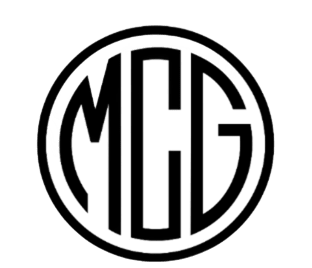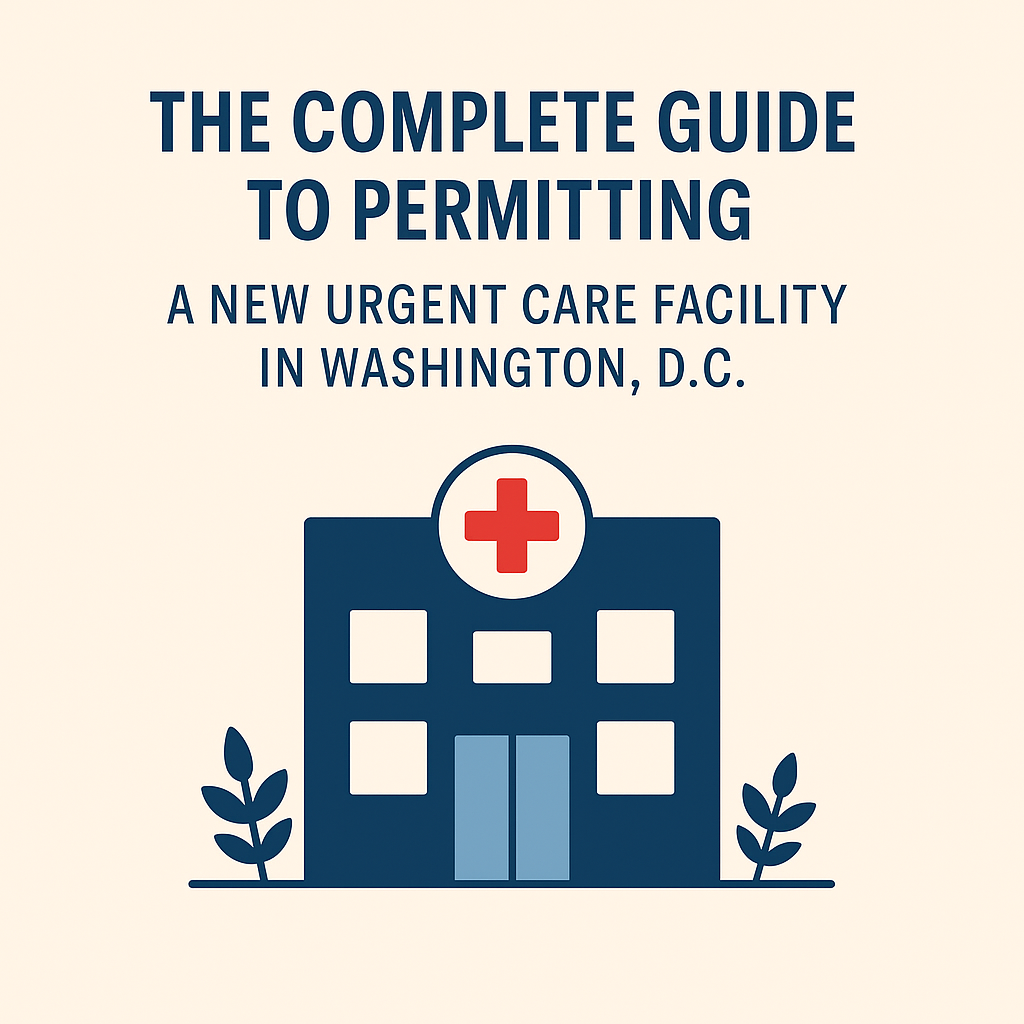Permitting a New Urgent Care Facility in Washington, D.C.
Permitting a New Urgent Care Facility in Washington, D.C.
Opening an urgent care facility in D.C. involves navigating a multi-agency regulatory process. With the right strategy, the permitting timeline typically ranges from 8 to 16 weeks. Here's a simplified roadmap.
Why Urgent Care Permitting Is Unique
Urgent care centers are held to higher safety standards than standard offices. They often require:
Change-of-use permits
Upgrades to HVAC, electrical, and plumbing
Specialized systems (e.g., medical gas, infection control)
Coordination with DOB, Fire Marshal, Health Department, and DDOT
The Four Phases of Permitting
1. Pre-Permitting Assessment (Weeks 1–2)
Zoning & Site Review: Confirm zoning, parking, setbacks
Occupancy Classification: Assess required changes for medical use
Space Planning: Ensure accessibility and compliance
Code Assessment: Identify necessary system upgrades
Why It Matters: Early discovery of issues prevents redesigns and delays.
2. Application Preparation (Weeks 3–4)
Change-of-Use Application: Code narratives, safety, ADA, egress
MEP Permits: HVAC (ventilation, pressure), Electrical (emergency power), Plumbing (medical sinks, backflow)
Fire Systems: Sprinklers, alarms, egress signage
Health Dept Pre-Application: Infection control, waste, sterilization, training
Accessibility Docs: ADA-compliant design and signage
Why It Matters: Complete applications avoid multi-week rejections.
3. Agency Review & Coordination (Weeks 5–12)
DOB: Building code, life safety, MEP coordination (4–6 weeks)
Fire Marshal: Suppression, egress, emergency lighting (3–5 weeks)
Health Dept: Infection control and patient safety (2–4 weeks)
DDOT: If applicable, for parking and right-of-way (2–3 weeks)
What We Do:
Monitor permits daily
Respond to examiner comments within 24 hours
Coordinate corrections and resubmissions promptly
Why It Matters: Fast responses = shorter timeline
4. Inspections & Certificate of Occupancy (Weeks 13–16)
Inspections: Building, Fire, Health, Electrical, Plumbing
Coordination: Scheduling, preparation, documentation
Outcome: Final C of O approval = legal authorization to open
Common Challenges & How to Avoid Them
1. Change-of-Use Complexity:
Fix: Assess upgrades before signing a lease
2. Incomplete MEP Specs:
Fix: Hire healthcare-experienced engineers
3. Accessibility Gaps:
Fix: Involve an ADA consultant early
4. Weak Health Dept Submissions:
Fix: Document all protocols thoroughly
5. Agency Conflicts:
Fix: Coordinate DOB, Fire Marshal, and Health Dept together
Realistic Timelines
8–10 Weeks: Minimal upgrades, complete apps
12–16 Weeks: Major upgrades, re-submissions, slow team responses
Control Your Timeline By:
Submitting thorough applications
Responding quickly to agency comments
Coordinating design/engineering teams early
Choosing a Permit Coordinator
Look for:
Healthcare facility experience
Proven agency relationships
Strong communication and response times
Direct involvement from senior staff
Key Takeaways
Pre-assessments prevent delays
Complete, detailed submissions are essential
Multi-agency coordination must be proactive
Inspections must be professionally managed
Timeline: 8–16 weeks from submission to C of O
Success relies on an experienced healthcare permitting partner
Ready to Get Started?
MCG Healthcare Permitting specializes in urgent care and medical facility approvals in Washington, D.C. We coordinate across all agencies, identify risks early, and deliver results.
Contact:
Phone: (202) 729-8272
Email: sayhello@mcgpermits.com

